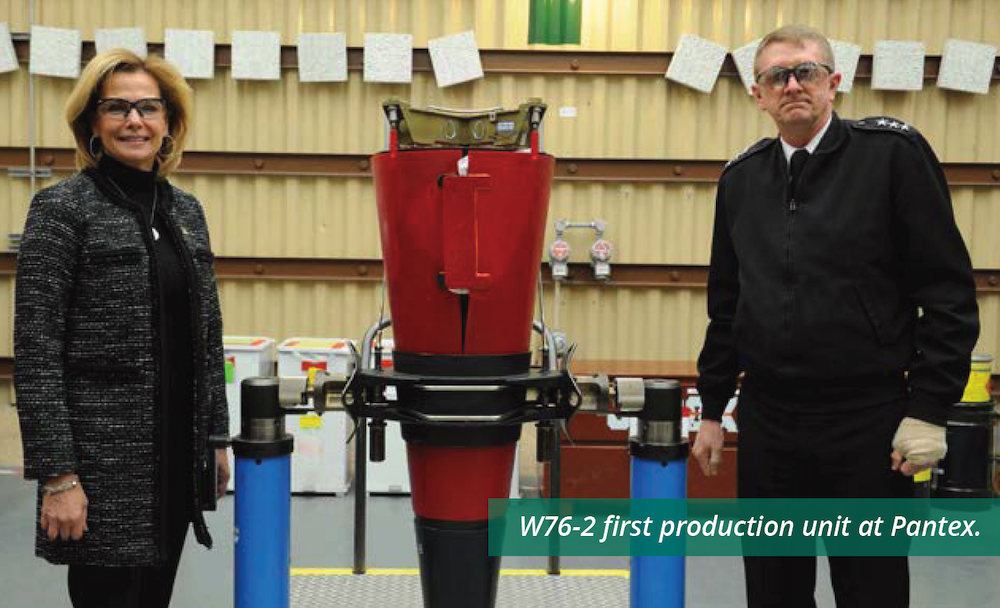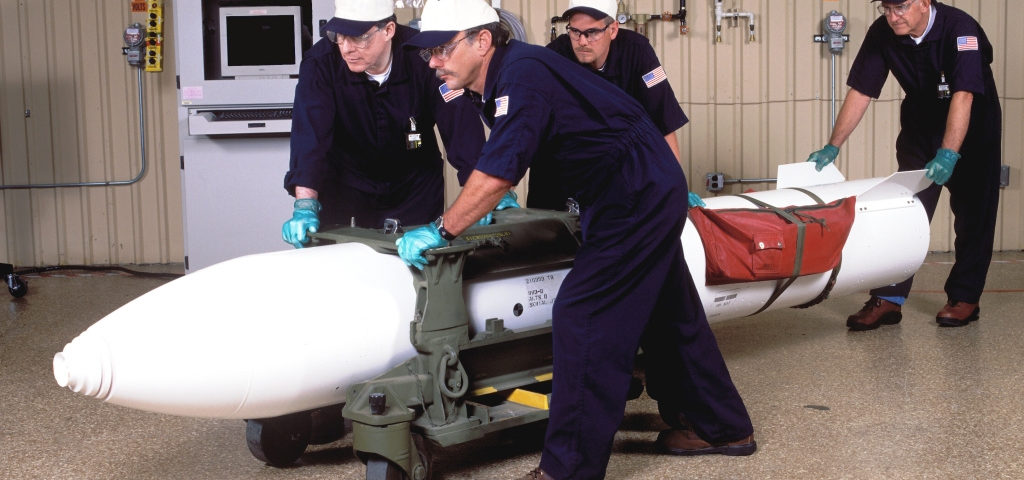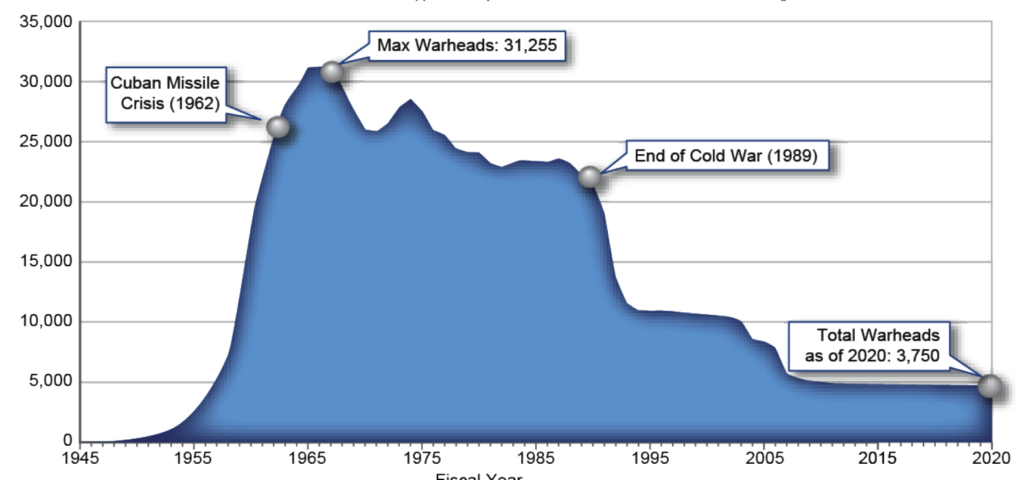After Trump Secrecy, Biden Administration Restores US Nuclear Weapons Transparency
[Updated] The Biden administration yesterday afternoon declassified the number of nuclear weapons the United States possesses. The act reverses the secrecy of the Trump administration, which denied release of the number for three years, and restores the nuclear transparency of the Obama administration.
FAS’ Steve Aftergood asked for this information in March 2021. We have still not received an official response.
Although a victory for nuclear transparency, the data shows only very limited nuclear weapons reductions in recent years – a stark reminder of the international nuclear climate, domestic policies, and that a lot more work is needed to reduce nuclear dangers.
Stockpile Numbers
According to the new data, the United States possessed a total of 3,750 nuclear warheads in the Department of Defense nuclear weapons stockpile as of September 2020. That number is only 50 warheads less than our estimate of 3,800 warheads from early this year.
The 3,750-warhead number is only 72 warheads fewer than in September 2017, the last number made available before the Trump administration closed the books.
That reduction is by any measure mediocre. In its announcement about the new stockpile numbers, the US Department of State highlights that the current stockpile of 3,750 warheads “represents an approximate 88 percent reduction in the stockpile from its maximum (31,255) at the end of fiscal year 1967, and an approximate 83 percent reduction from its level (22,217) when the Berlin Wall fell in late 1989.” While that is true and an amazing accomplishment, the fact remains that the vast majority of that reduction happened in two phases during the H.W. Bush and W. Bush administrations. Since 2008 the reduction has been slow and limited. The trend is that the reduction is decreasing and leveling out.
A peculiar revelation in the new data is that it shows that the stockpile increased by 20 warheads between September 2018 and September 2019 when Trump was in office. The increase is not explained but one possibility is that it reflects the production of the new W76-2 low-yield warhead that the Trump administration rushed into production in response to what it said was Russia’s plans for first-use of tactical nuclear weapons. The first W76-2 was produced in February 2019, NNSA was scheduled to deliver all the warheads by end of Fiscal Year 2019, but the W76-2 wasn’t completed until June 2020. Arkin and Kristensen reported in January 2020 that the first W76-2s had been deployed, which was later confirmed by the Pentagon.

It is possible (but unconfirmed) that the 20-warhead stockpile increase between 2018 and 2019 was caused by production of the Trump administration’s W76-2 low-yield Trident warhead. Image: NNSA.
The Trump administration’s brief increase of the stockpile is only the second time the United States has increased its number of nuclear warheads since the Cold War. The first time was in 1995-1996 when the Clinton administration increased the stockpile by 107 warheads. Since the W76-2 production continued after September 2019, the increase of 20 warheads should not be misinterpreted as being the final number of W76-2 warheads. After the 2018-2019 increase, the stockpile number dropped again by 55 warheads.
Update: Another possibility for the brief stockpile increase is that a small number of retired warheads were returned to the stockpile. This could potentially be B83-1 bombs that the Trump administration decided to retain instead of retiring with the fielding of the B61-12. It could potentially also be retired warheads brought in as feedstock for new weapon systems such as the planned nuclear sea-launched cruise missile. We just don’t know at this point.
Apparently, the nuclear modernization program supported by both Republicans and most Democrats, will result in significant additional reductions of the stockpile. In 2016, the former head of the Navy’s Strategic Systems Program, Vice Admiral Terry Benedict, said that once the W76-1 warhead production was completed by the end of FY2019, the W76-0 warheads that had not been converted to W76-1 would be retired and the total number of W76 warheads in the stockpile decrease by nearly 50%.
At the same time, the Pentagon’s Principal Deputy Assistant Secretary of Defense for Nuclear, Chemical, and Biological Defense Programs, Arthur T. Hopkins, told Congress that production and fielding of the B61-12 bomb would “result in a nearly 50 percent reduction in the number of nuclear gravity bombs in the stockpile” and “facilitate the removal from the stockpile of the last megaton-class weapon––the B83-1.”
Production of the W76-1 has now been completed but the promised reduction is not yet visible in the stockpile data – unless the excess warheads were gradually removed during the production years. The B61-12 has not been fielded yet so the gravity bomb reduction presumably will not happen until the mid-2020s.
Whatever the number of the additional stockpile reduction is, it is not planned to be nice to Kremlin and Beijing but because the US military doesn’t need the excess warheads anymore. Whether Russia and China’s nuclear increases will cause the Biden administration to change the plan outlined by Benedict and Hopkins will be decided by the Nuclear Posture Review.
Dismantlement Numbers
The data also shows that the United States as of September 2020 had about 2,000 retired warheads in storage awaiting dismantlement. Retired warheads are owned by the Department of Energy and not part of the DOD stockpile.
That number matches the available data. Former Secretary of State John Kerry said in 2015 that there were about 2,500 retired weapons left (as of September 2014). Since then, 1,432 warheads have been dismantled and an additional 967 weapons retired, which would leave just over 2,000 warheads in the dismantlement queue.

Approximately 2,000 retired warheads away dismantlement, including the B83 megaton gravity bomb. More are expected to follow during the next decade. Image: NNSA.
In our estimate from early this year, we thought the dismantlement queue had dropped to 1,750 warheads because we assumed the annual dismantlement rate had remained around 300. But as the data shows, both the Trump and Biden administrations reduced the number of warheads being dismantled per year.
In 2016, NNSA stated that it “will increase weapons dismantlement by 20 percent starting in FY 2018” and that the “accelerated rate will allow NNSA to complete the dismantlement commitment a year early, before the end of FY 2021.” NNSA reaffirmed in 2018, that all warheads retired prior to 2009 would be dismantled by end-FY 2022.
This pledge appears to have faded from recent documents after the 2018 Nuclear Posture Review was published. Instead, the annual number of warheads dismantled has decreased since FY 2018. Is it still the goal? Some of the warheads that should have been dismantled but are still with us reportedly include the W84 warheads from the ground-launched cruise missiles that were eliminated by the 1987 INF treaty and retired well before 2009.
Many of the warheads in the current dismantlement queue were retired after 2009. At the current rate of 184 warheads dismantled per year, it will take more than a decade to dismantle the current backlog. Once the excess W76s and old gravity bombs enter the queue, it will take even longer.
In Context
We commend the Biden administration for reversing the Trump administration’s shortsighted and counterproductive nuclear secrecy and restore transparency to the US nuclear weapons stockpile. This decision is a heavy lifting at a time when so-called Great Power Competition is overtaking defense and arms control analysis. The Federation of American Scientists has for years advocated for increased transparency of nuclear arsenals and have worked to provide that through our estimates of nuclear weapons arsenals.
Although the recent reductions shown in stockpile and dismantlement data are modest, to put it mildly, we believe declassification is the right decision because making the record public will help US diplomats make the case that the United States is continuing its efforts to reduce nuclear arsenals and increase nuclear transparency. This is especially important in the context of the upcoming January 2022 Review Conference for the Treaty on the Non-Proliferation of Nuclear Weapons. Dissatisfaction with the lackluster disarmament progress – and a belief that the nuclear-armed states are walking back decades of arms control progress with their excessive nuclear modernization programs and dangerous changes to operations and strategy – have fueled support for the Treaty on the Prohibition of Nuclear Weapons (TPNW).
The decision to disclose the stockpile and dismantlement data will also enhance the US credibility when urging other nuclear-armed states to be more transparent about their arsenals. We have no illusions that Russia or China will follow the example in the short term, but keeping the US numbers secret will certainly not help. And over time, the disclosure can help shape discussions and norms about nuclear transparency to shape future decisions. This is also important because the Trump secrecy recently provided cover for the United Kingdom to reduce information about its nuclear forces.
Hardliners will no doubt criticize the Biden administration’s decision to disclose the stockpile and dismantlement data. They will argue that past nuclear transparency has not given the United States any leverage, that nuclear-armed states previously have not followed the example, and it that makes the United States look naive – even irresponsible – in view of Russia and China’s nuclear secrecy and build-up.
On the contrary: without transparency the United States has no case. Past transparency has given the United States leverage to defend its record and promote its policies in international fora, dismiss rumors and exaggerations about its nuclear arsenal, and publicly and privately challenge other nuclear-armed states’ secrecy and promote nuclear transparency. And since the disclosure does not reveal any critical national security information, there is no reason to classify the stockpile and dismantlement data.
Hardliners obviously will have to acknowledge that the data shows that there has been no unilateral US disarmament but only a very modest reduction in recent years. And although there appear to be additional unilateral reductions built into the modernization programs, those are actually programs that have been supported and defended by the hardliners.
Now it is up to the Biden administration’s Nuclear Posture Review to articulate how and to what extent those plans support and strengthen US national security and nonproliferation objectives. Arms control obviously will have to be part of that assessment. The declassified stockpile and dismantlement data will help make the case that additional reductions are both needed and possible.
Background Information:
- US Department of State, Transparency in the U.S. Nuclear Weapons Stockpile, Fact Sheet, October 5, 2021
- “United States Nuclear Forces, 2021,” FAS Nuclear Notebook, Bulletin of the Atomic Scientists, March/April 2021
- “Pentagon Slams Door On Nuclear Weapons Stockpile Transparency,” FAS Strategic Security Blog, April 17, 2019
- Status of World Nuclear Forces, Federation of American Scientists global arsenal page
This article was made possible by generous support from the John D. and Catherine T. MacArthur Foundation, the New Land Foundation, the Prospect Hill Foundation, and the Ploughshares Fund. The statements made and views expressed are solely the responsibility of the authors.
The FY2026 National Defense Authorization Act (NDAA) paints a picture of a Congress that is working to both protect and accelerate nuclear modernization programs while simultaneously lacking trust in the Pentagon and the Department of Energy to execute them.
While advanced Chinese language proficiency and cultural familiarity remain irreplaceable skills, they are neither necessary nor sufficient for successful open-source analysis on China’s nuclear forces.
Satellite imagery has long served as a tool for observing on-the-ground activity worldwide, and offers especially valuable insights into the operation, development, and physical features related to nuclear technology.
This report outlines a framework relying on “Cooperative Technical Means” for effective arms control verification based on remote sensing, avoiding on-site inspections but maintaining a level of transparency that allows for immediate detection of changes in nuclear posture or a significant build-up above agreed limits.
